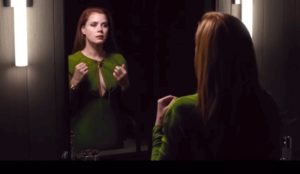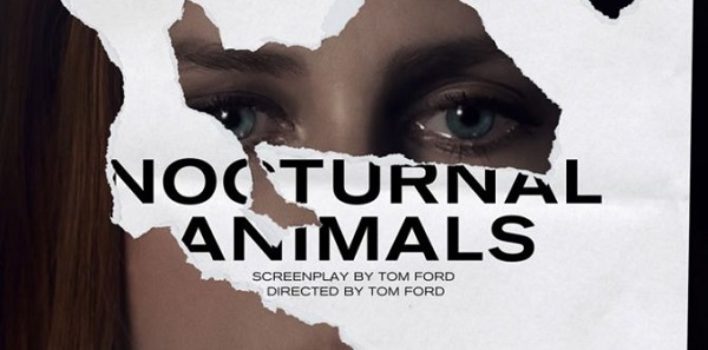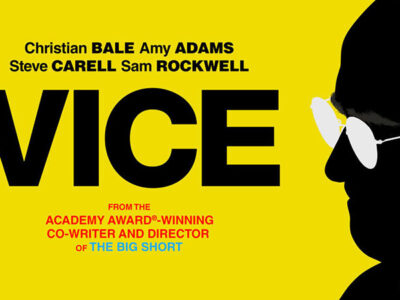Review| Nocturnal Animals
 Love can be violence in some ways. It is not a physical violence—for that is never love—but it is a violence done to ourselves in the process of making more of another person. The very nature of love is something that requires sacrifice of self; an emptying of ego, pride and want so that the other person becomes the recipient of all that we have to offer. When people love each other, then, they do violence unto themselves by submitting their own wants and desires to each other; a complex and elegant interchange and fulfillment found through someone else instead of ourselves. This fragile interchange is always on the brink of fracture and, when it fractures, that violence becomes misplaced and infected.
Love can be violence in some ways. It is not a physical violence—for that is never love—but it is a violence done to ourselves in the process of making more of another person. The very nature of love is something that requires sacrifice of self; an emptying of ego, pride and want so that the other person becomes the recipient of all that we have to offer. When people love each other, then, they do violence unto themselves by submitting their own wants and desires to each other; a complex and elegant interchange and fulfillment found through someone else instead of ourselves. This fragile interchange is always on the brink of fracture and, when it fractures, that violence becomes misplaced and infected.
Nocturnal Animals is a meditation on the fractures between people and the various ways that violence can splinter. Susan Morrow (played by Amy Adams) is a successful art gallery owner who receives a manuscript from her ex-husband, Edward (played by Jake Gyllenhaal); the title named after her and the story being dedicated to her. The manuscript tells the story of a young family who are confronted on a West Texas highway by a group of men who begin toying with them on the road, causing them to ultimately wreck. From that point on, the story takes a dark and violent turn for the family. The audience witnesses the action of the novel as Susan reads it and we see, intermittently, her reactions as she goes further and further into the narrative. Tom Ford’s direction begins to visually parallel Susan’s reality with the father’s story which is played by Gyllenhaal as well.
 As Susan sinks deeper into the narrative of the story, she begins to question her ex-husband’s intentions in dedicating the novel to her. Is her ex filling up the spaces between the lines with a passive aggressive rage? Is the narrative of the manuscript literally fleshing out the hurt and anger that he has towards her? That is ultimately the question we are left with by the end of the film. There is an answer given in the final scene, but how we read the text of each layer of this film—and where they intersect and diverge—will define how that answer given by the film will be interpreted by each person. Our interpretations of the film and the resolution of its various strands of metanarrative speaks more to our own understandings of love and brokenness than any kind of certainties about the filmmakers’ intent.
As Susan sinks deeper into the narrative of the story, she begins to question her ex-husband’s intentions in dedicating the novel to her. Is her ex filling up the spaces between the lines with a passive aggressive rage? Is the narrative of the manuscript literally fleshing out the hurt and anger that he has towards her? That is ultimately the question we are left with by the end of the film. There is an answer given in the final scene, but how we read the text of each layer of this film—and where they intersect and diverge—will define how that answer given by the film will be interpreted by each person. Our interpretations of the film and the resolution of its various strands of metanarrative speaks more to our own understandings of love and brokenness than any kind of certainties about the filmmakers’ intent.
From the surreal, flamboyant opening images to the silence leading up to the fade to black, Tom Ford’s direction is steady and intentional. Every moment, every scene and every narrative turn is played out with precision. Because of this, it is easy to see how some see this film as largely cold and unfeeling in its execution. However, that cold, mechanical touch plays effectively into the narrative of what seems to be a vengeance film played out with emotional violence instead of the typical physical violence. This is not a thriller made for those who want to find a culmination in intense displays of action and/or violence. It is a slow burn that resolves with a quiet anger and an uneasiness that lingers long after the film ends.
 It is this uneasiness that stuck with me in the days after I saw the film. It is the ambiguous nature of the film’s emotional punch that is striking. No matter how one interprets the events of the film, the emotional response seems to be the same: heavy and foreboding. The film is aiming to make us feel the violence that splinters off from the remaining slivers of human relationship. How we seethe below the surface when we are wronged, how the resentment from perceived scorn can live on in our words and actions and how that anger is always just a moment away from putting on flesh and becoming a physical thing that aims to do harm to its victims.
It is this uneasiness that stuck with me in the days after I saw the film. It is the ambiguous nature of the film’s emotional punch that is striking. No matter how one interprets the events of the film, the emotional response seems to be the same: heavy and foreboding. The film is aiming to make us feel the violence that splinters off from the remaining slivers of human relationship. How we seethe below the surface when we are wronged, how the resentment from perceived scorn can live on in our words and actions and how that anger is always just a moment away from putting on flesh and becoming a physical thing that aims to do harm to its victims.
Whenever human relationship breaks down and that elegant balance is shattered, what is left in the wake is a dim mystery about what the other person is thinking and feeling and how their perception and hurt will become incarnated. What makes Nocturnal Animals such a fascinating film is its willingness to speculate on the contents of that relational mystery and make them unfold like the pages of a good novel. While the meaning of the film may differ for each person, Tom Ford’s creation allows for a type of catharsis that seeks out the relational brokenness that we have all felt and makes us feel the toll that such fractures can inflict on us. The uneasiness, then, comes with the film’s ability to illuminate the unsettling realization that any of us can be carried away by these emotional forms of violence when they become less like sacrifice in love and more like retaliation out of a distorted sense of justice.







